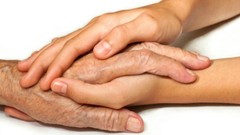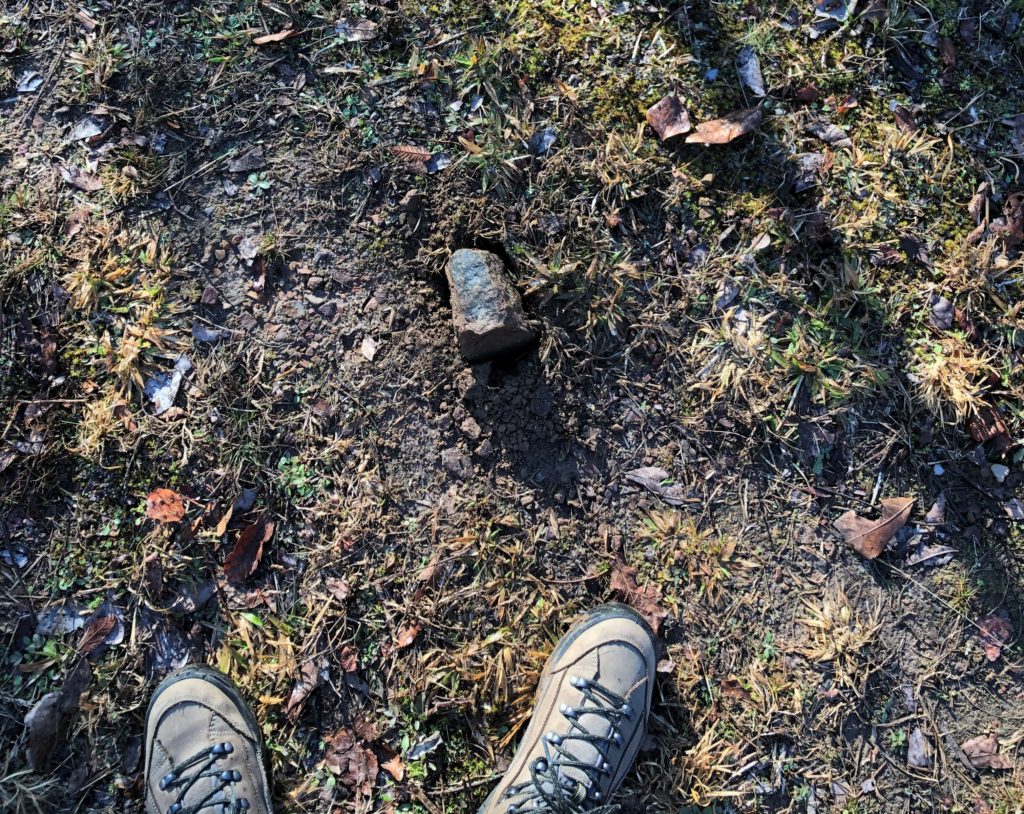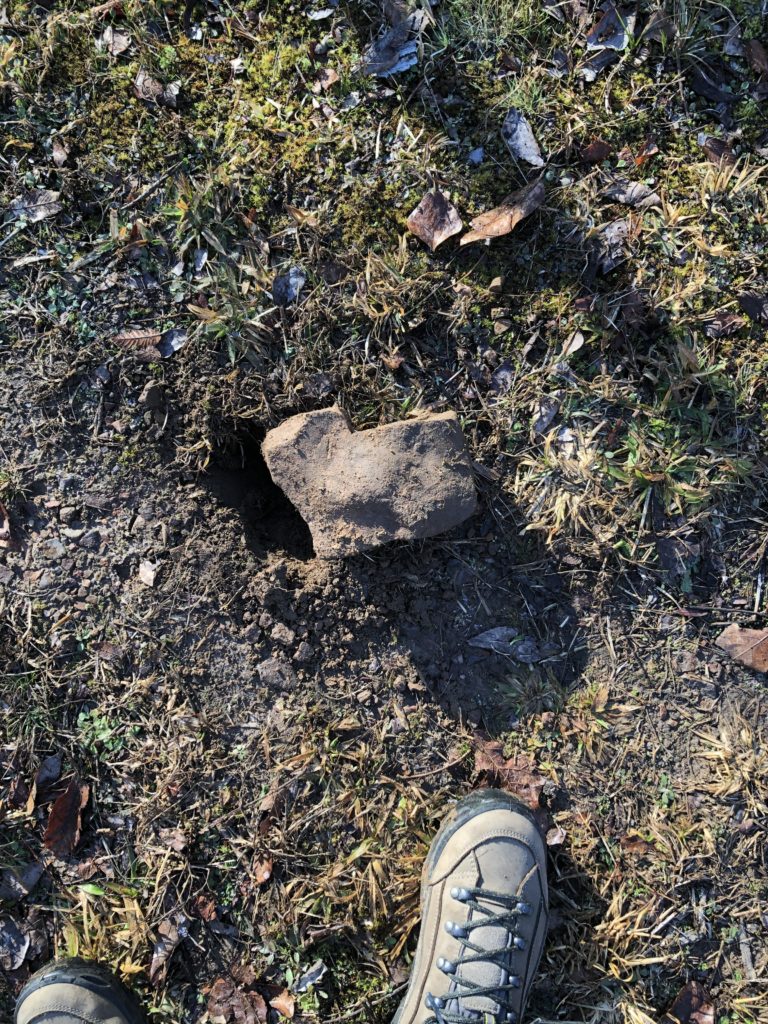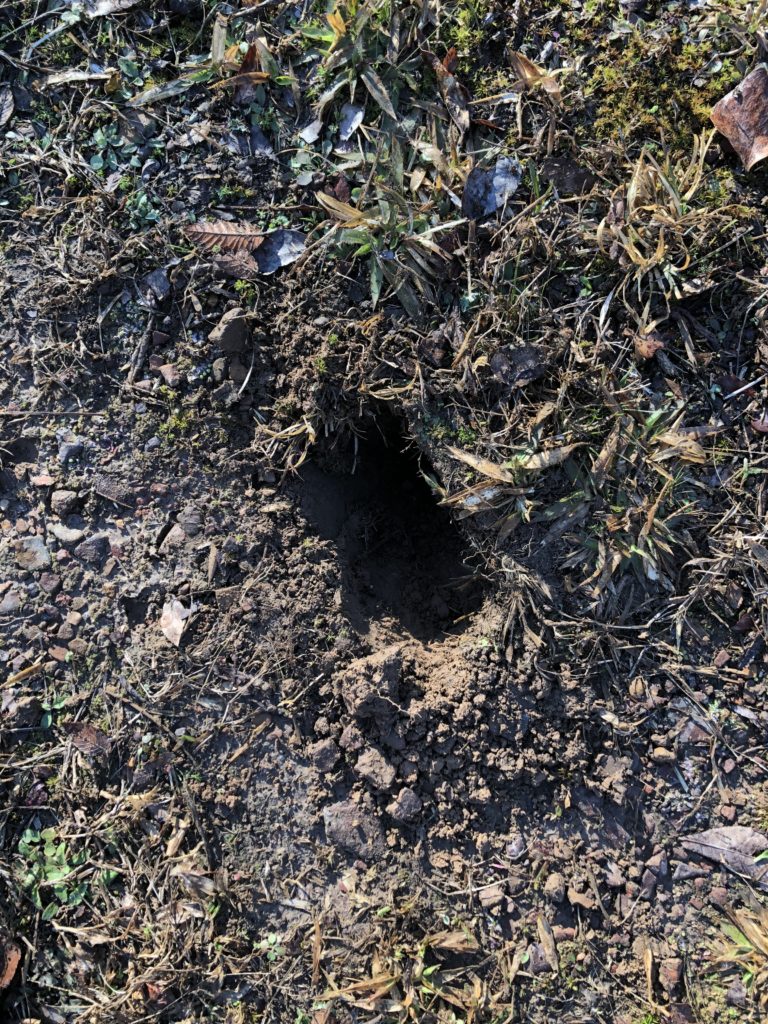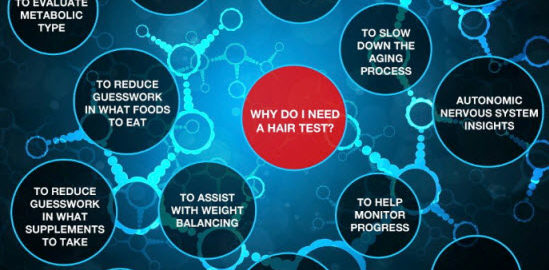I have used mineral analysis for over 20 years. They have changed my life. Mineral balancing is crucial to our well being. Balancing in general, of all things, is crucial to our well being. We can be taking in the correct foods, liquids, minerals, and vitamins, but without the correct balancing to it all, it can be a mishap in our system. The following article is snippets from a newsletter article; the information is amazing. Contact me to set up an initial consultation to find out more about mineral analysis and wellness coaching. I am ready to help you create the healthy life you long for. Jeana
David L. Watts, Ph.D., Director of Research
The immune system is a complex network consisting of
cells, tissues and organs and their coordination is required
to protect the body from infectious pathogens and noninfectious foreign substances. It is essential for the immune
system to be at its optimum for resistance to invading
pathogens and for the development of immunity.
Optimization of the immune system depends upon many
factors, not the least of which includes our nutritional
status, but also the psycho-neuro-endocrine system.
Branches of the Immune System
Immune Imbalance
When the immune system is not compromised and has
dealt with a threat, the systems return to a homeostatic
balance. I rather use the term rheostatic balance as cells
and biochemical defense systems in body are constantly
alert, on guard and ready to mount a defense toward an
invader, similar to a standing army. However, it is well
known that a branch of the immune system can become
overactive and become detrimental to the host. This is due
to the potential antagonism between the CIR and HIR
immune response causing autoimmune conditions. Further
discussions can be found in the following link;
https://traceelements.com/Docs/News%20Jan-Feb%2002.pdf. In
summary, the CIR (thymus-parasympathetic) can become
dominant suppressing the HIR (adrenal-sympathetic).
Conversely, the HIR (adrenal-sympathetic) can become
dominant and suppress the CIR (thymus-parasympathetic).
Other researchers have found this to be the case. Harrison,
found an inverse relationship between humoral and cellular
mediated immunity in subjects at risk of insulin dependent
diabetes. It is speculated that in an autoimmune disease,
such as insulin dependent diabetes, the pancreatic beta cells
are destroyed or impaired by the T-cells, which is associated
with cell-mediated immunity. It is interesting that HTMA
patterns of patients with adult onset diabetes, are
commonly associated with the slow metabolic mineral
pattern, or increased cellular immune activity. Other
studies have reported finding an imbalance between the
cellular and humoral response in conditions such as lupus,
rheumatoid arthritis, Sjogren’s Syndrome, Chron’s disease
and celiac disease. In other words, it is very evident that the
cellular immune response can over-power the humoral
immune response and vice-versa. The following statement
by Katz illustrates this point very well, “..it is becoming
increasingly well documented that, in some animal models
and in humans, the humoral immune system can act to the
detriment of the host and indeed, block the activity of the
cellular immune system in its attempt to destroy
neoplastic cells.”
https://traceelements.com/Docs/News%20March-April%2094.pdf.
When discussing or treating autoimmune conditions, one
must consider which branch of the immune system to
support rather than generally treating the immune system as
a whole.
Viruses and the Immune System
Viruses activate the CIR, which I mentioned previously is
also a thymus response in tandem with a parasympathetic
response. Bacteria however tend to activate the HIR in
conjunction with an adrenal and sympathetic response. As
viral infections are more common than bacterial infections
and due to the present day incidence of COVID-19, I will limit
this discussion to viral conditions.
HTMA Patterns and CIR
HTMA studies have shown distinct mineral patterns
associated with an elevated CIR and autoimmune conditions
associated with excessive CIR. As mentioned previously, the
CIR is associated with a parasympathetic mineral pattern and
it can be surmised that a parasympathetic mineral pattern
may predispose the body to viral susceptibility due to a
number of factors.
Elevated Tissue Calcium and Viral Activity
One factor that increases viral susceptibility is elevated
tissue concentrations of calcium. Viruses use the calcium
signals to enter cells and to create an ideal environment for
their replication. (Cell Calcium, 2009)
“The exact mechanism behind viral latency or viral replication
is not totally known. However, a group of researchers
explored this phenomenon in relation to the Epstein Barr
virus, and their findings were reported in SCIENCE in 1986.
Lymphoid cells were infected with the Epstein Barr genome.
The Epstein Barr virus would either replicate slowly or remain
dormant. Dormancy of the virus could be overcome a
number of ways such as super-imposing a super virus or by
introducing tumor promoting agents. The tumor promoting
agents that activated the Epstein Barr virus also activated a
cellular enzyme protein kinase C that is calcium dependent;
therefore, they studied the effect of increased cellular
calcium concentration on the lymphatic cells. They found
that calcium modulation was of primary importance in
activating the Epstein Barr genome. Other studies have been
reported that implicate calcium in regulating the infection of
human B-lymphocytes by Epstein Barr virus. When calcium
entry into the cells was blocked, the Epstein Barr virus
transformation was inhibited.”
https://traceelements.com/Docs/News%20Nov-Dec%2089.pdf.
The Journal of Virology (2010) published findings that the
West Nile (WNV) virus infections lead to a rapid and
sustained calcium influx into the cells resulting in extending
the survival of the WNV within cells. They found that
reducing the influx of calcium into cells by various methods
during an early infection decreased viral yield.
Calcium Antagonism and Viral Inhibition
It is apparent that reducing cellular calcium influx would
also help to reduce cellular viral influx and replication.
Interestingly, hydroxychloroquine, an anti-malaria drug can
contribute to anti-viral activity by reducing cellular calcium
influx. (Chloroquine Inhibits Ca2+ Signaling in Murine CD4+
Thymocytes. https://www.researchgate.net/journal/1421-
9778_Cellular_Physiology_and_Biochemistry)
Also interesting is that elevated calcium concentrations are
found in those with sickle cell disease, a condition
associated with malaria. (Prog Clin Biol Res.) (Sci Rep. 2017)
There are many drugs designated as calcium channel
blockers which one can wonder if they may impact viral
replication by their action. Apparently, calcium channel
blockers such as verapamil increases the concentrations of
chloroquine in the cell. Of course there are natural
nutritional calcium blockers available such as phosphorus,
magnesium, and Vitamin A.
Latent Epstein-Barr Virus (EBV) is present in
approximately ninety percent of humans worldwide and is
frequently established following a viral episode such as
mononucleosis. EBV is a member of the herpes virus
family. Usually dormant, chronic EBV activation can lead to
lymphoma, and other health conditions. Recent
investigations have found that in individuals who have a
genetic defect in the magnesium transporter 1 have high
levels of EBV. Conversely, individuals with chronic EBV
infections had low amounts of basal free magnesium levels
in their cells, even though bound levels of magnesium were
found to be normal. Ninety-five percent of the magnesium
present in the cell is bound and the rest is in a free form. A
reduction in free cellular magnesium concentration is
associated with a defect in the expression of the natural
killer activating receptor in natural killer cells, CD8 T cells
and reduces the cytotoxic response against EBV. With
magnesium supplementation, a restoration of the
concentration of free cellular magnesium results in reduced
EBV infected cells. Therefore, magnesium homeostasis is
important for antiviral and antitumor immunity. (Science.
2013)
Copper Excess and Pro-Viral Activity
We consider copper as a pro-viral agent. It has an
antagonistic effect on the mineral zinc which is known to
have anti-viral properties. We often see elevated HTMA
copper in individuals who have had or who are suffering
from viral episodes, including mononucleosis, AIDS, EBV,
CMV, etc. Copper also acts synergistically with calcium and
enhances increased tissue calcium accumulation and
thereby, predispose the cell to viral replication. (Virol J.
2017) I realize there are a lot of statements on the internet
promoting copper as an anti-viral agent which I find a bit
questionable. Copper has long been known for its
antimicrobial properties particularly toward bacteria.
Bacteria such as staph, MRSA and C. difficile, etc. were
destroyed almost immediately when exposed to copper
surfaces with almost 100 percent within a couple of hours
which is why many hospitals use copper coated surfaces
and bed rails which has reduced hospital-acquired staph
infections tremendously. While COVID-19 is known to take
up to 4 hours to degrade on copper surfaces. It is possible I
suppose that the effect of copper on viruses could be due to
differences between RNA and DNA viruses.
Anti-Viral Properties of Zinc, Molybdenum and Vitamin C
Zinc is also well known for its anti-viral properties. Zinc is
also antagonistic to the mineral copper. Perhaps the reason
that chloroquine has some anti-viral effects is due to its
ionophore action. Chloroquine enhances the transport of
zinc across cell membranes and into cells. Zinc is a strong
inhibitor of RNA viruses by inhibiting RNA polymerase.
Pneumonia is a major cause of death in children less than
five years of age. A double-blind placebo-controlled clinical
trial of 270 children found that zinc supplementation in the
amount of 20 milligrams per day resulted in accelerated
recovery from pneumonia. The mineral zinc also helped to
reduce antimicrobial resistance and decreased multiple
antibiotic exposure as well as reduce complications and
deaths. (Brooks, et al. Lancet, 363, 2004) Low zinc levels
during a viral infection is often associated with a loss of
taste and smell, which has been reported in individuals
contracting COVID-19, but is common in most severe viral
infections. White spots showing up in the fingernails
following a viral infection are also an indication of zinc
deficiency.
Vitamin C and molybdenum are also known to be anti-viral
due to their copper antagonism. Both zinc and vitamin C
have been reported to be effective in treatment of those
who have contracted COVID 19 and other viruses such as
HIV. A number of studies are being carried out in the U.S.
and abroad on the therapeutic effectiveness of zinc and
vitamin C in COVID -19 patients.
Anti-Viral Properties of Niacin and Vitamin A
We have found that HIV is associated with elevated tissue
concentrations of copper in a number of studies we have
performed at TEI. As stated previously, we categorize
excess copper as being pro-viral. Excess copper increases
the oxidation of vitamin C and can contribute to pellagra. It
has been found that individuals who have contracted HIV
virus progressing to AIDS and ARC, develop a pellagra-like
condition. Tryptophan levels are extremely low along with
niacin contributing to NAD depletion. Dietary niacin therapy
led to an increase in tryptophan levels in those affected.
Normally tryptophan is converted to niacin, but providing
tryptophan would potentially increase concentrations of
neurotoxic intermediates. (Lancet. 2003) (Nutrition. 2001)
Vitamin A is synergistic to zinc and also lowers tissue
calcium and is therefore, considered to be anti-viral. Vitamin
A is known to combat respiratory tract viral infections that
contribute to pneumonia. One mechanism for vitamin A’s
effectiveness is that it can contribute to down regulation of
IL-6 and reduce hyperactive T cell response to viruses and
reduce the hyperactive cytokine storm. (Penkert,R, et.al.
2017) (Liang, Y, et al. 2013) Vitamin A is essential for healthy
mucous membranes, the first defensive barrier to
microorganisms.
Cytokine Storm and Hyperactivity of the CIR
Cytokine production is a normal consequence of viral
infections. However, when the cellular immune response
becomes over active a cytokine storm can develop and be
detrimental to the host. On the basis of research into the
immune system, Notkins and colleagues made the following
statement, “…there is growing evidence that cells are
damaged not directly by replicating viruses but by a specific
immune response that produces the symptoms of the
disease.” The authors site Clemens von Pirquet, an Austrian
pediatrician who more than 60 years previously, speculated
that the immune response may be responsible for injury to
tissues. Wallace P. Rowe, a virus researcher at the National
Institutes of Health, later confirmed von Pirquet’s suspicions.
His experiments involved the study of the lymphocyte
choriomeningitis (LCM) virus. When introduced into lab
animals the virus spread rapidly throughout the body. In six
days the animals began to show an immune response to the
virus, developed meningitis and died. To determine the
immune systems involvement, Dr. Rowe performed another
experiment, in which he exposed one group of animals to
radiation, as radiation is known to suppress the immune
response. Whereas, in the control group, the immune
system was not suppressed. After the LCM virus was
introduced into the animals, the virus spread throughout the
bodies of both groups.
The control animals developed meningitis and died, as in
previous experiments. However, the immune suppressed
group did not develop meningitis. Rowe, therefore found
that the meningitis was caused not by the virus itself, but by
the body’s immune response to the virus.
https://traceelements.com/Docs/News%20March-April%2094.pdf
In order to control the cytokine storm seen in COVID-19
cases as well as other viruses, immune-suppressants are
used effectively, such as steroids, and other immunosuppressing drugs such as tocilizumab.
(https://www.jwatch.org/na51506/2020/05/12/tocilizumab-mightattenuate-cytokine-storm-covid-19?query=C19)
Trace Elements and the Immune System
Lukac, et al reported the importance of trace elements on
the immune system. They play an important role in
physiological processes that are crucial for normal
functioning. The authors also state that deficiencies of trace
elements are often found with infectious disease and can
therefore, influence susceptibility, course and outcome of a
number of viral infections. Further, “Some trace elements
inhibit viral replication in the host cells and therefore have
antiviral activity. Many trace elements act as antioxidants or
are able not only to regulate the host immune response but
also to alter viral genome.” (Lukac, 2007)
It is known that nutritional deficiencies exist in the early
stages of human immunodeficiency virus (HIV) infection.
Botswana, has one of the highest rates of HIV infection in
the world and early treatment in the population with
antiretroviral therapy (ART) can be slow and difficult. A trial
using multivitamins was conducted involving over eighthundred HIV patients in the early stages of HIV and who
were not on ART. The vitamins included B complex along
with vitamins C, E and selenium. The study was conducted
over a two year period and found that nutritional
supplementation was safe and significantly reduced the risk
of a decline in immunity as well as morbidity among those
treated compared to a placebo group. (Baum, MK, et al.
2013.)
Viral Complications and Metabolic Types Based Upon
HTMA Patterns
Viruses are responsible for most infections in industrialized
populations. From HTMA studies that we have performed
around the world (over one million) we have found that the
majority of individuals have parasympathetic dominant
mineral patterns (approximately 70% average) making them
more susceptible to complications of viral infections. This
mineral pattern is associated with dominant cellular immune
activity. The following chart shows the percentage of
metabolic types in different countries based upon HTMA
patterns we have performed.
Interestingly, it appears that in countries with a higher
population of Parasympathetic dominance (CIR), death rates
are higher compared to countries with a lower percentage of
Parasympathetic dominance (CIR). As of this date, we can
see Norway appears to have the lowest percentage of
Parasympathetic metabolic types and has fewer deaths per
confirmed case from COVID-19 compared to countries such
as England and Italy. However, the HTMA metabolic
patterns do not take into consideration the age of the
population and those other factors that may contribute to
vulnerability to the virus.
Although specific nutrients or drugs would not prevent
anyone contracting a virus we can surmise that specific
nutrients may aid in reducing complications of viral
infections. Anti-viral nutrients in individuals with a dominant
CIR include; magnesium, phosphorus, zinc, molybdenum,
selenium, vitamin C, vitamins A, B1, B3 and E. Synergists to
these would also include; vitamin B6, and amino acids such
as methionine. Nutrients or products that would further
stimulate the CIR such as; calcium, copper, vitamin D,
thymus, Co-Q10, colostrum, etc, would be contraindicated,
as these nutrients enhance increased cellular calcium
concentrations.
For sympathetic types having an elevated HIR
(approximately 30% of population) then calcium,
magnesium, vitamins D, B2, B1, thymus, colostrum and coQ10 would be indicated.
We should also remember that the endocrine system is
also involved in immune function and balance. A
disturbance in the HPA and gonadal axis can impact and
produce a compromised immune response which should
also be addressed. Some hormones can be categorized as
anti-viral or pro-viral. Reports of individuals with COVID-19
have found that progesterone may help in preventing
complications from the COVID virus as it appears to help
reduce inflammation. Progesterone as well testosterone is
associated with the mineral zinc and along with zinc lowers
copper as well as estrogen. Hormones that increase
parasympathetic activity and CIR dominance could be
considered pro-viral and include; Estrogen, Insulin and
Parathyroid Hormone. Anti-Viral hormones, those that
raise sympathetic activity and HIR activity include;
Progesterone, Testosterone, and Thyroid. Further
discussion can be found at;
https://traceelements.com/Docs/News%20Jan-Feb%2002.pdf.
this article was snippits from an entire article. For entire article and resources, visit https://www.traceelements.com/Docs/NewsletterJune-July2020.pdf
Contact me to set up an initial consultation to find out more about mineral analysis and wellness coaching. I am ready to help you create the healthy life you long for. Jeana



